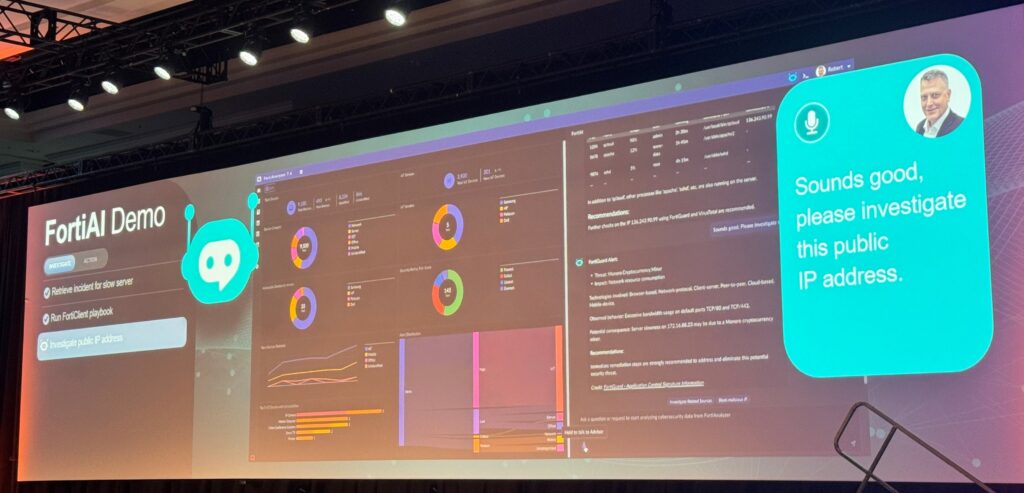We attended Fortinet’s annual Accelerate conference, joining a record-setting 4,000+ attendees to learn more about the company’s latest advancements. The main message we took from Accelerate was Fortinet’s emphasis on its “platform” capabilities across its broad portfolio.
Security Fabric Platform: Fortinet showcased its expansive product line. The company’s platform strategy, long known as its “Security Fabric,” has evolved into its “Security Fabric Platform.” Fortinet has essentially been delivering a platform for years. Still, its shift in emphasizing “platform” reflects a broader trend in the market, where leading vendors are bundling their offerings under what they claim are unified platforms to streamline management and configuration for customers. At Accelerate, Fortinet showed how it deeply integrates its functions and operations into its unified platform.
FortiOS 7.6: Fortinet has a tradition of introducing its latest iteration of the FortiOS operating system at Accelerate. This year, version 7.6 includes hundreds of enhancements across its Security Fabric, including SD-WAN, SASE, ZTNA, RBI, DEM, automation, provisioning, and more. Fortinet also offers flexible payment options, allowing customers to tailor their use of software and hardware functions to their specific needs.

GenAI Integration with Security Fabric: Building on its existing GenAI capabilities, Fortinet integrated FortiAI natively within its central data lake, FortiAnalyzer, and unified console, FortiManager, as part of FortiOS 7.6. We thought one of the most interesting technology demonstrations that Fortinet showed us at the conference was that it was somewhat geeky (and we mean that as a complement) and detailed use of this GenAI. In the demo, Fortinet showed how FortiAi could be queried to find a slow server, run the playbook, investigate a public IP address, find a malicious IP address, load the threat hunting page, create an incident report, and send tasks to co-workers for further investigation.

OT: One area of Fortinet that we have closely been following is OT, and we are tracking this as one of Fortinet’s most successful efforts in recent years. We view Fortinet as a disruptor in the OT security landscape. Fortinet has developed ruggedized and industrial-class products, released OT-specific versions of its IT-class products, and has released OT-only modules to serve the specific needs of industrial equipment, such as those found in manufacturing, energy and utilities, and construction industries. Fortinet now boasts 52,000 OT-related customers and is introducing numerous unique and valuable products to this new class of buyers. One good example of the company’s focus on delivering OT-class products is its recent dual-5G ruggedized FortiGate 70G appliance, which is useful in connecting to harsh, remote environments in various industries, including those for the remote ATM devices in the banking industry.
Endpoint added to Fortinet’s unified agent: FortiClient, the Fortinet Security Fabric’s unified agent, will now integrate with EDR and add a number of features. This allows Fortinet to provide a unified agent that includes VPN, ZTNA, EPP, EDR, DEM, NAC, and SASE to reduce agent sprawl and simplify management. There was a lot of activity around Fortinet’s FortiClient booth at the Fortinet Tech Expo at Accelerate.
Fortinet’s Security Fabric Platform includes a broad portfolio of products, and 650 Group covers these security and network markets extensively, helping a wide variety of clients with market intelligence.